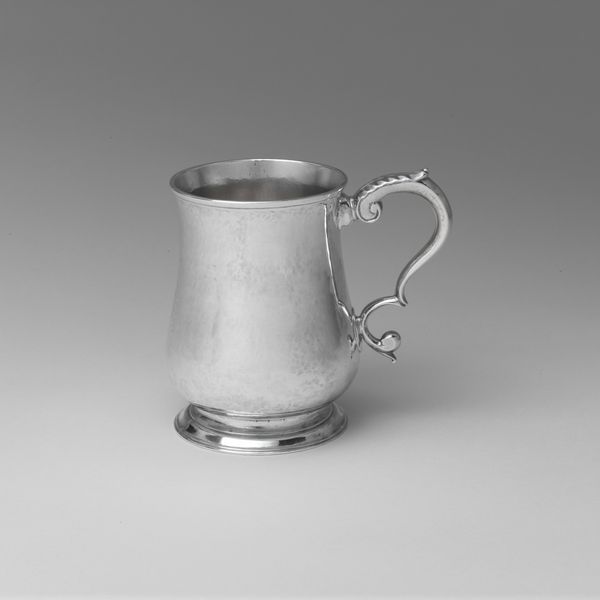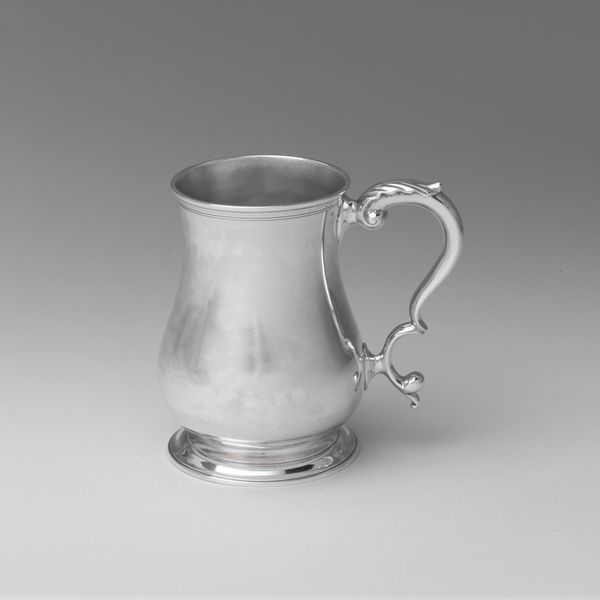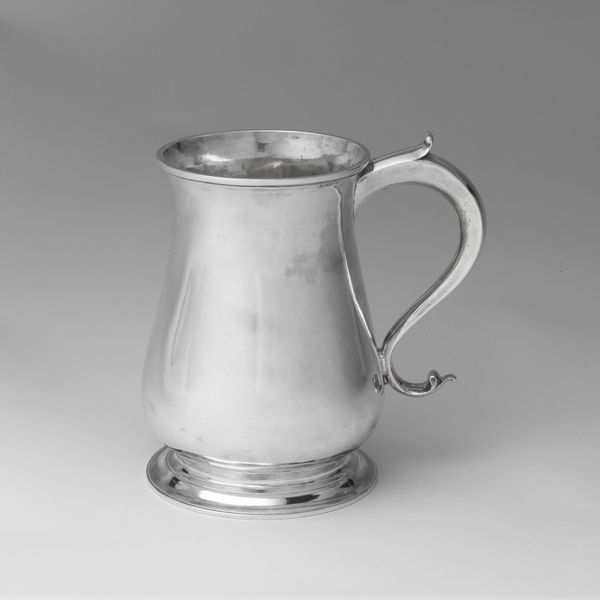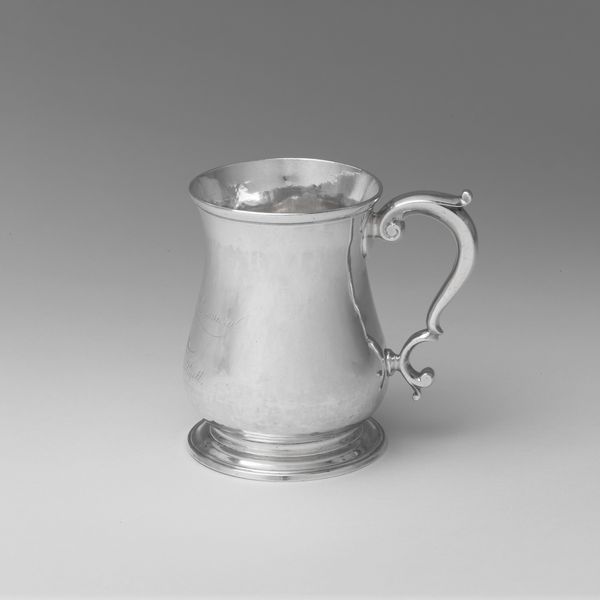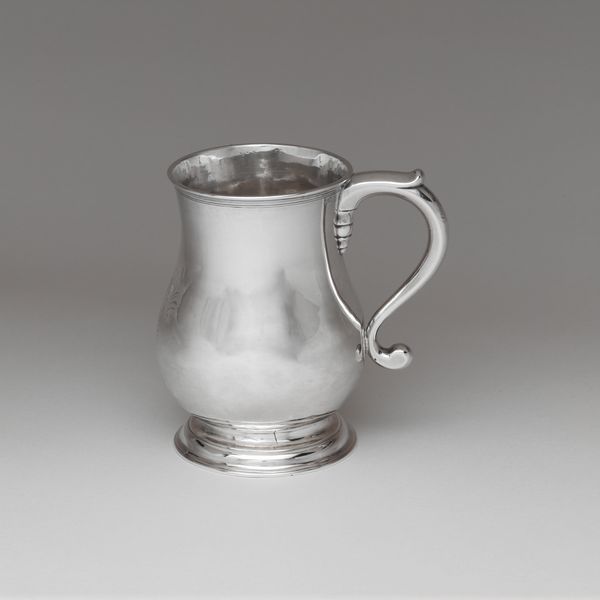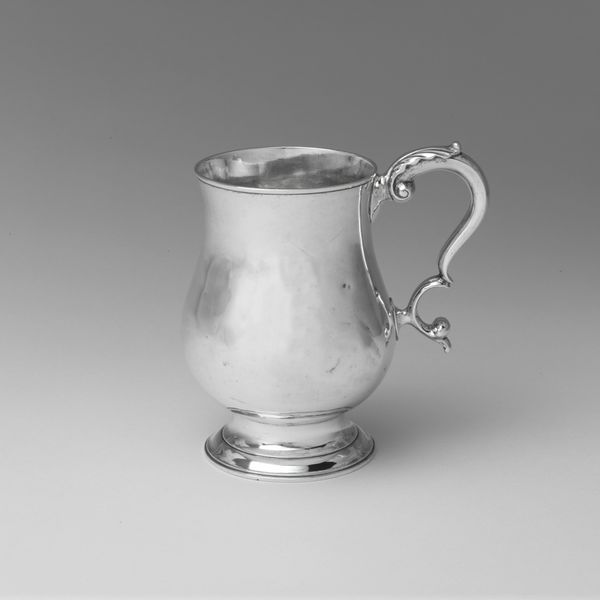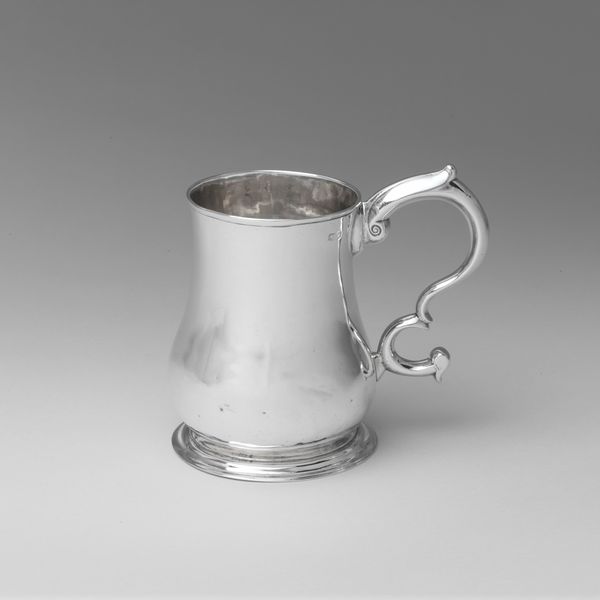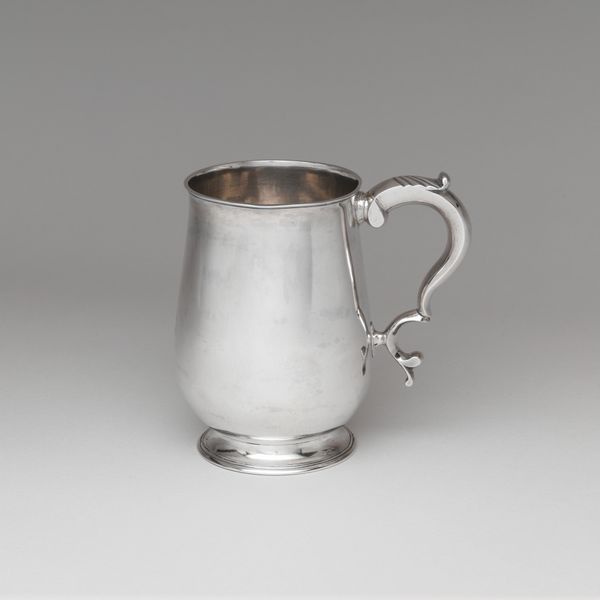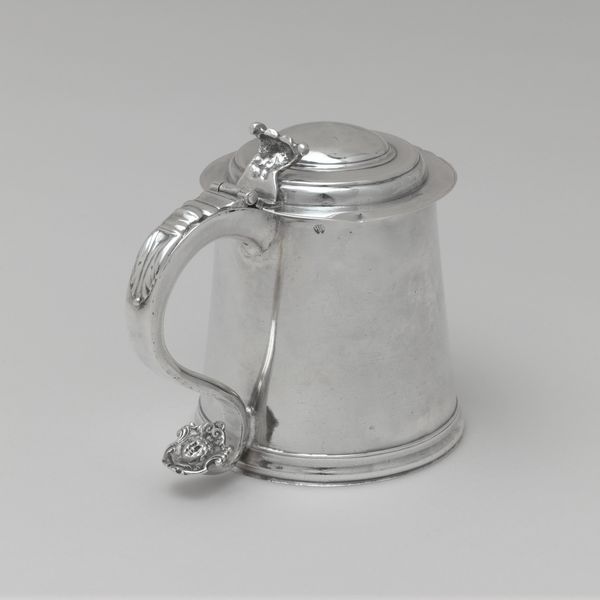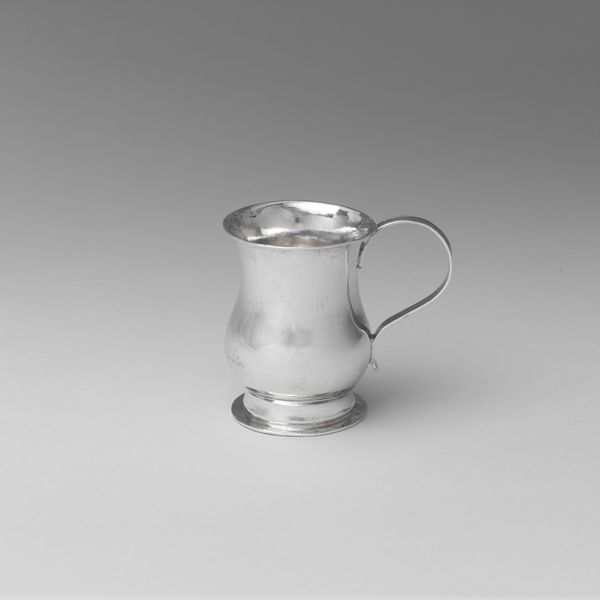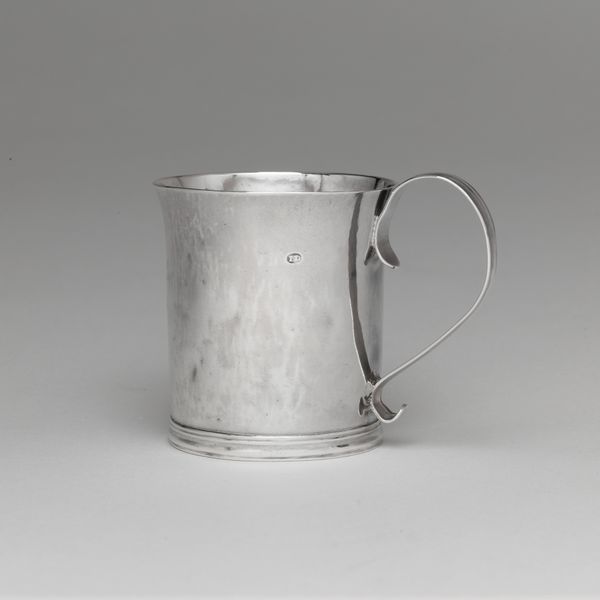
silver, metal, photography
#
silver
#
metal
#
photography
#
decorative-art
Dimensions: Overall: 5 13/16 x 5 5/8 in. (14.8 x 14.3 cm); 13 oz. 19 dwt. (435.3 g) Lip: Diam. 3 5/8 in. (9.2 cm) Base: Diam. 3 7/16 in. (8.7 cm)
Copyright: Public Domain
Curator: Here we have a cann, dating back to between 1780 and 1790. It's currently held here at the Metropolitan Museum of Art. Editor: The light catches the silver surface so beautifully, doesn’t it? It evokes a sense of simple elegance, almost austerity, despite the decorative handle. It feels incredibly tactile, cool to the touch. Curator: Absolutely. These silver objects functioned as symbols of status and power. The very existence of a silver cann speaks volumes about the social and economic hierarchies of the late 18th century. Who possessed these, who created them, and who were denied them? What was the legacy of silver during that time in different class levels? Editor: The handle, though delicate, has such an interesting visual rhythm. It leads the eye around the object. Perhaps it's meant to suggest abundance or prosperity through visual cues... Maybe it's echoing earlier classical forms that conveyed virtue and luxury. Curator: The very form references societal structures, as wealth would often reflect societal power and control. Did the beverage being consumed within these cups promote further social mobility? Tea drinking became incredibly fashionable, which may influence these later styles of drinkware. Silver pieces can be tools of control as well as reflection of its history. Editor: It makes me wonder about the rituals surrounding its use. What did conversations around a table involving such a vessel sound like? What memories are built within silverware across a social scale, not only during its existence but into contemporary reflections? Curator: These objects provide entry points for interrogating social inequalities. They act as vessels of larger political dynamics present in 1780-1790. Editor: Considering all of this together allows us to reflect on how the everyday becomes imbued with layered meanings over time. Curator: Precisely. They encourage dialogue around ownership, labor, taste, and the complicated networks of cultural meaning.
Comments
No comments
Be the first to comment and join the conversation on the ultimate creative platform.
